Why is Threads Losing Active Users and the Role of Retention in Their Future Success
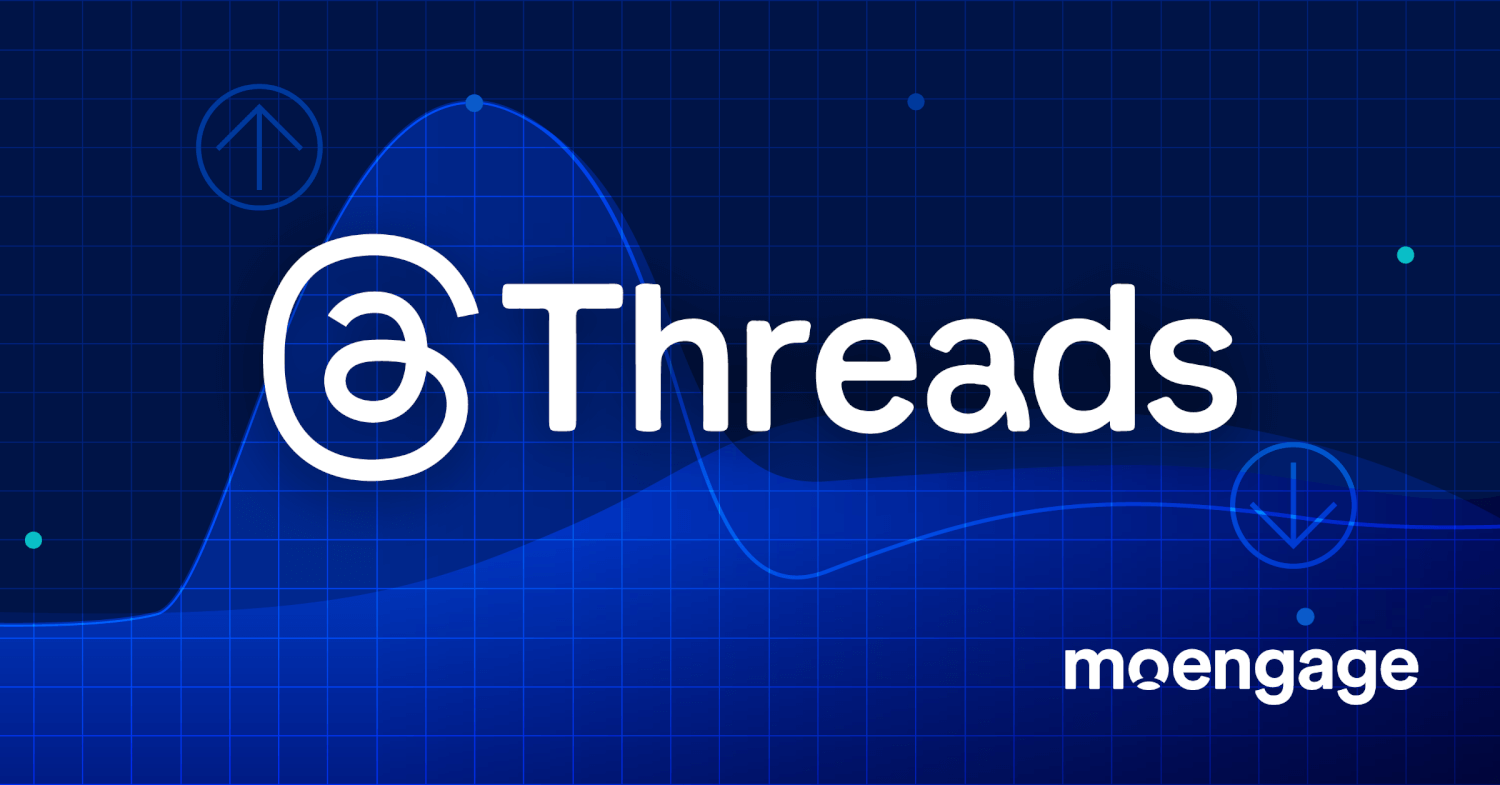
Reading Time: 10 minutes
In July 2023, Meta (formerly Facebook) launched Threads, a new platform for sharing text updates and joining public conversations. The micro-blogging platform is one of Meta’s biggest bets since Facebook and directly competes with platforms like Twitter. And thanks to Meta’s existing customer base and easy sign-up using Instagram, it saw an astounding start.
Meta’s Exponential User Growth
Within just seven hours of launch, Threads saw 10 million users sign-up. This made it the fastest platform to reach 10 million customers. For comparison, Facebook took 852 days and Twitter 780 days to reach the same number of customers.
And new sign-ups only skyrocketed from there. Threads reached 150 million signups within just six days of its launch and it continued adding more customers.
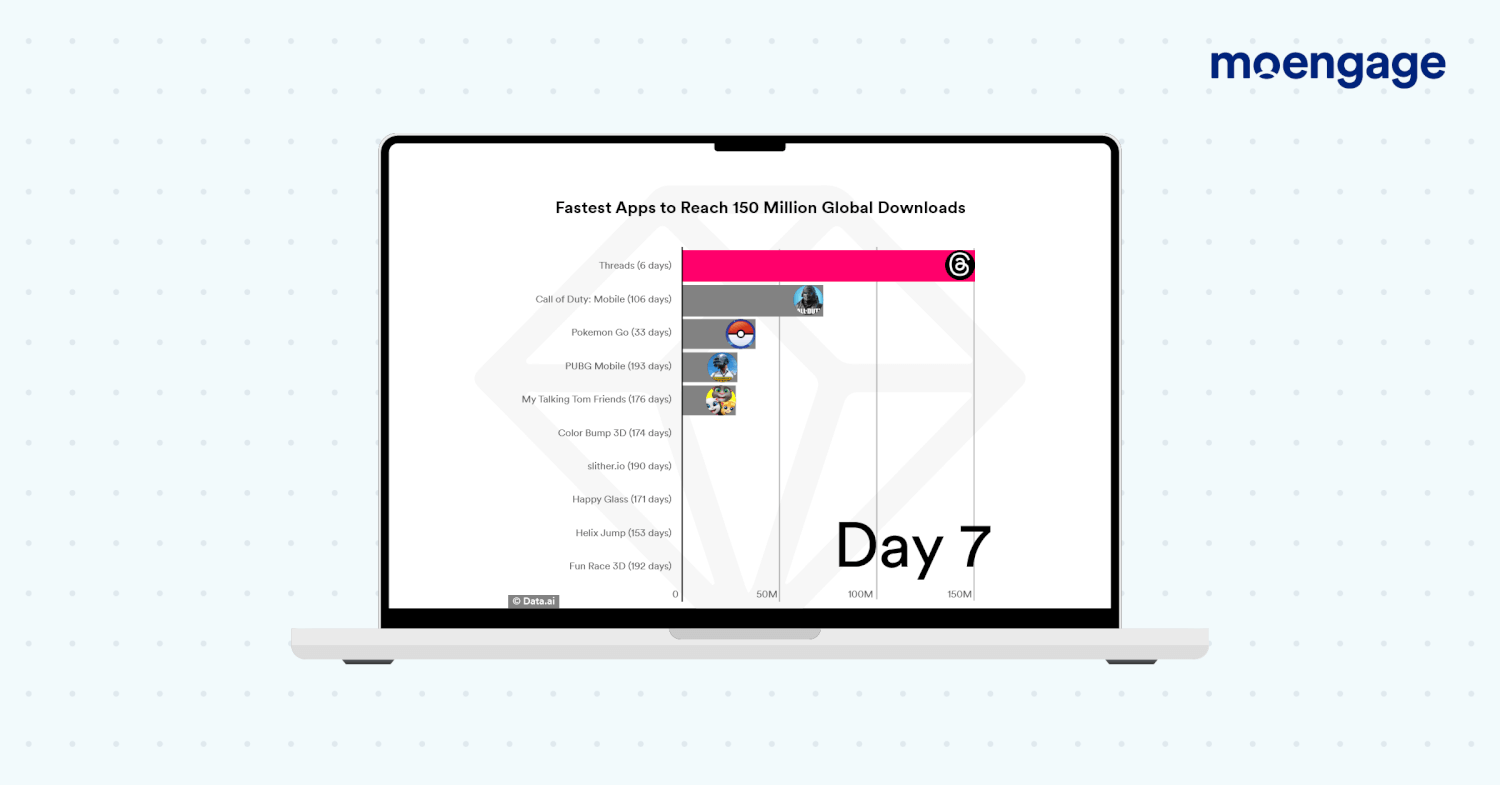
What Went Wrong?
Despite the astounding start, the daily active users (DAU) plummeted significantly after the launch week. According to SimilarWeb, DAU dropped from 49 million to 23.6 million in a week. Even though Threads has onboarded over 150 million consumers, only a fraction are actively using the platform.
This is because Threads wasn’t able to retain consumers on its platform and keep them engaged.
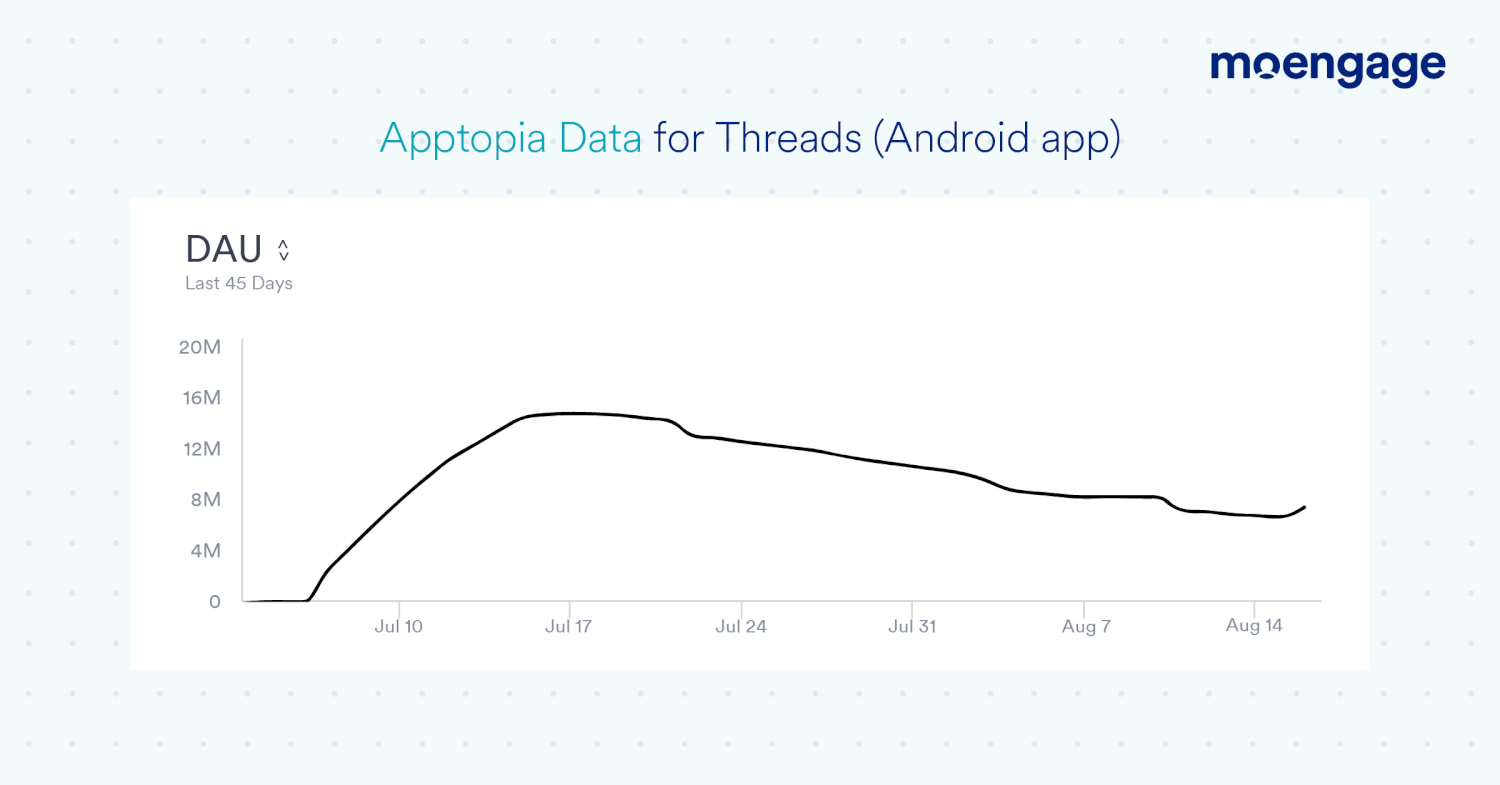
Here are some key statistics about Threads App usage (from SimilarWeb) –
- The usage in North America, which saw the most activity during the launch week, peaked at about 21 minutes of engagement with the app on July 7 (two days after launch). But by July 14, the engagement was down to a little over 6 minutes.
- After the launch, Twitter’s web traffic was down only 5% compared with the same days of the previous week. And the traffic bounced back the week after.
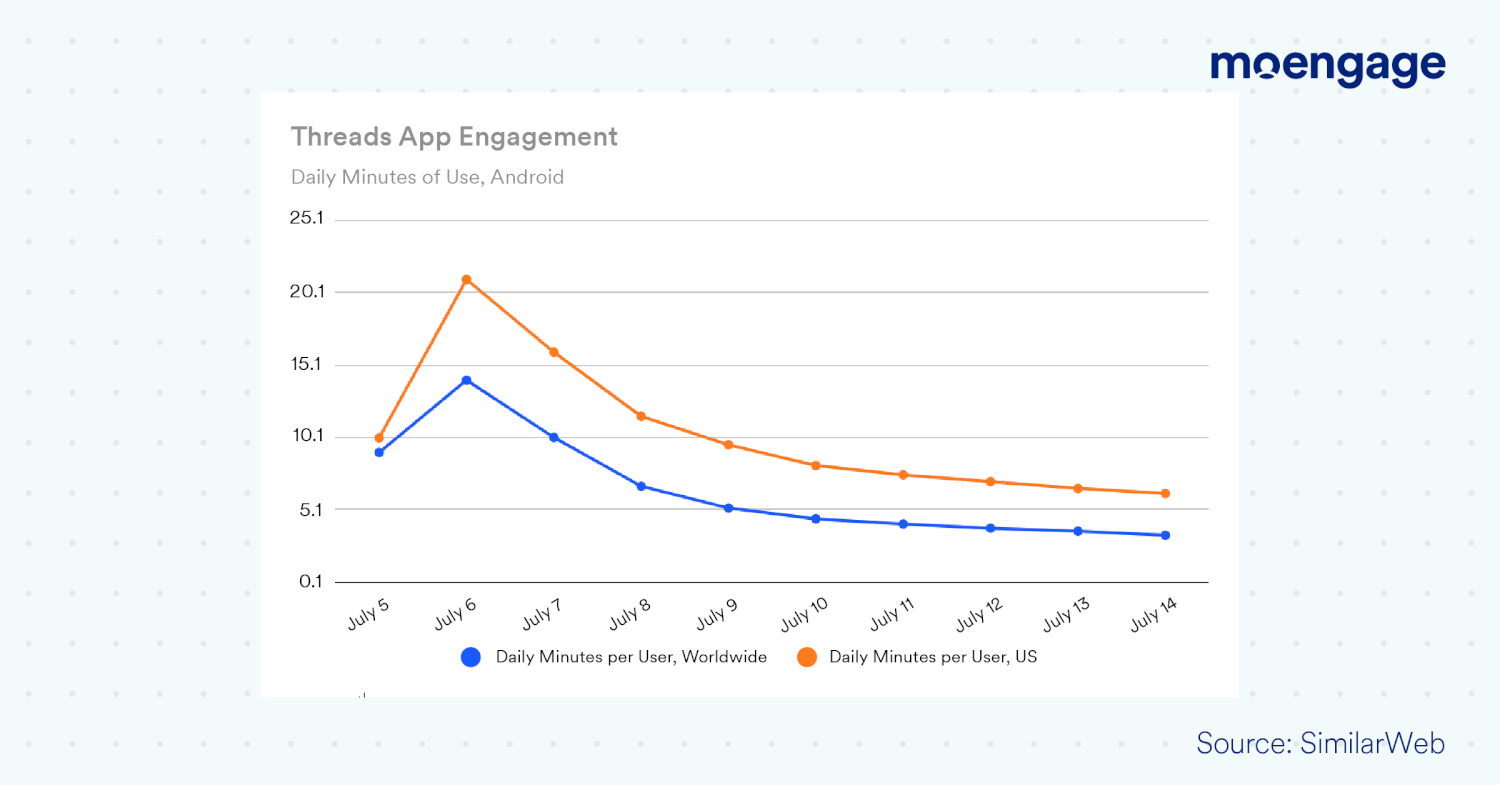
While there are multiple reasons behind the fall, we can safely conclude that even if you have an unlimited acquisition engine (like Meta has), you still need to focus on customer retention. The same holds true for viral applications and games like Wordle.
You can read about Wordle’s viral growth story here.
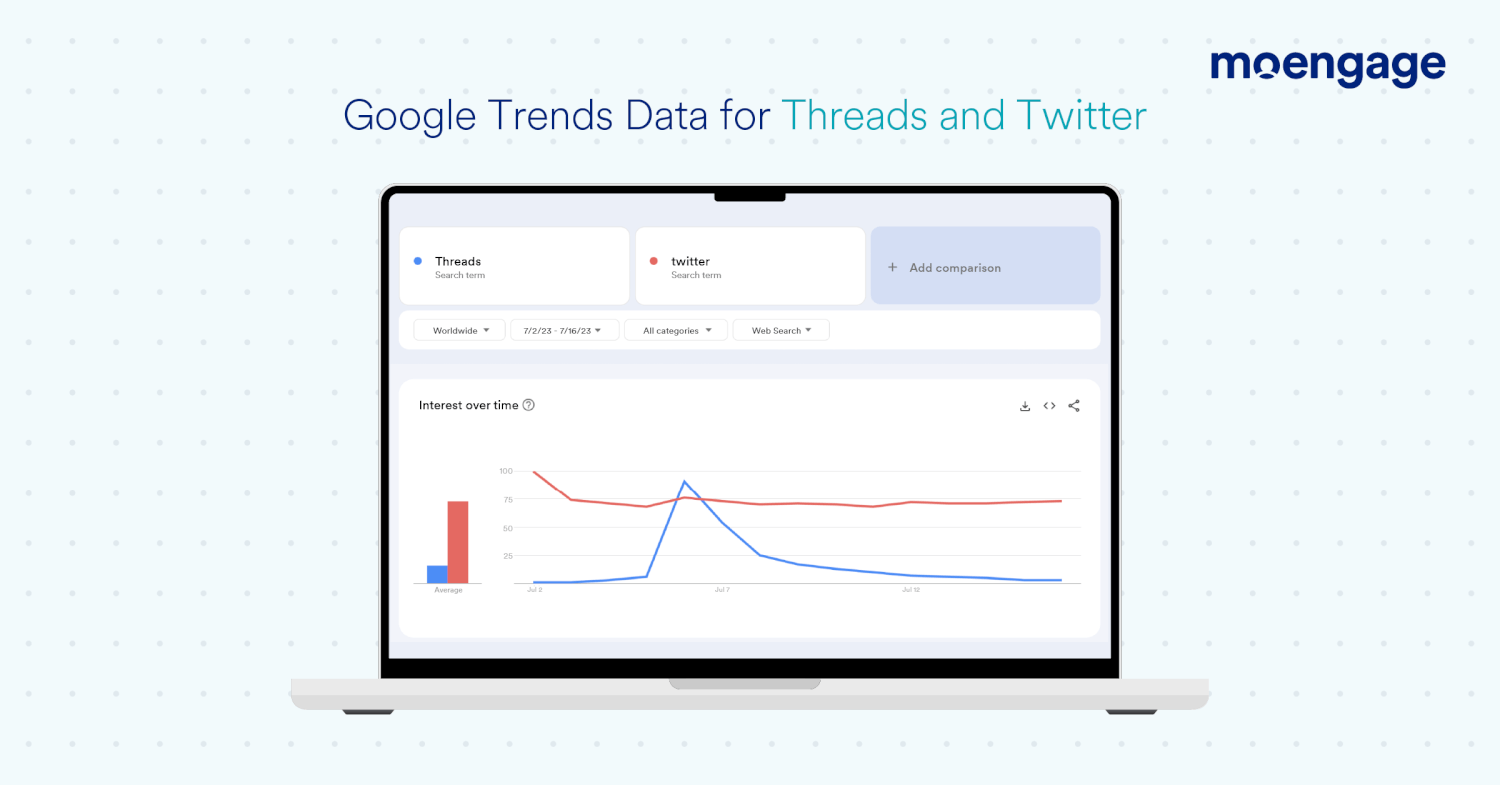
But what’s the solution? And what strategies can consumer brands implement to retain customers?
We’ll find exactly that in this article. But first, let’s see how to analyze and benchmark retention numbers –
Analyzing and Benchmarking Day 0, Day 1, Day 7, and Day 30 Retention Numbers
The most effective way of analyzing user retention is by monitoring and benchmarking Day 0, Day 1, Day 7, and Day 30 retention numbers with your competition/niche.
Again, these numbers are different for various niches. For example, Gaming platforms tend to have the highest consistent Day 1 retention rate out of all categories. On the other hand, E-commerce platforms comparatively will have a lower Day 1 retention rate as consumers won’t shop right away.
Now that you have a fair idea of how to measure customer retention, let’s look at a few retention strategies brands can leverage to improve their customer retention.
Retention Strategy #1 – Onboarding and Value Discovery
The importance of excellent onboarding is paramount for any platform. Our internal data show that 75% of customers who download an app or use a product drop off within the first week. And a big reason behind this is “unsatisfactory onboarding”.
Strategies To Follow
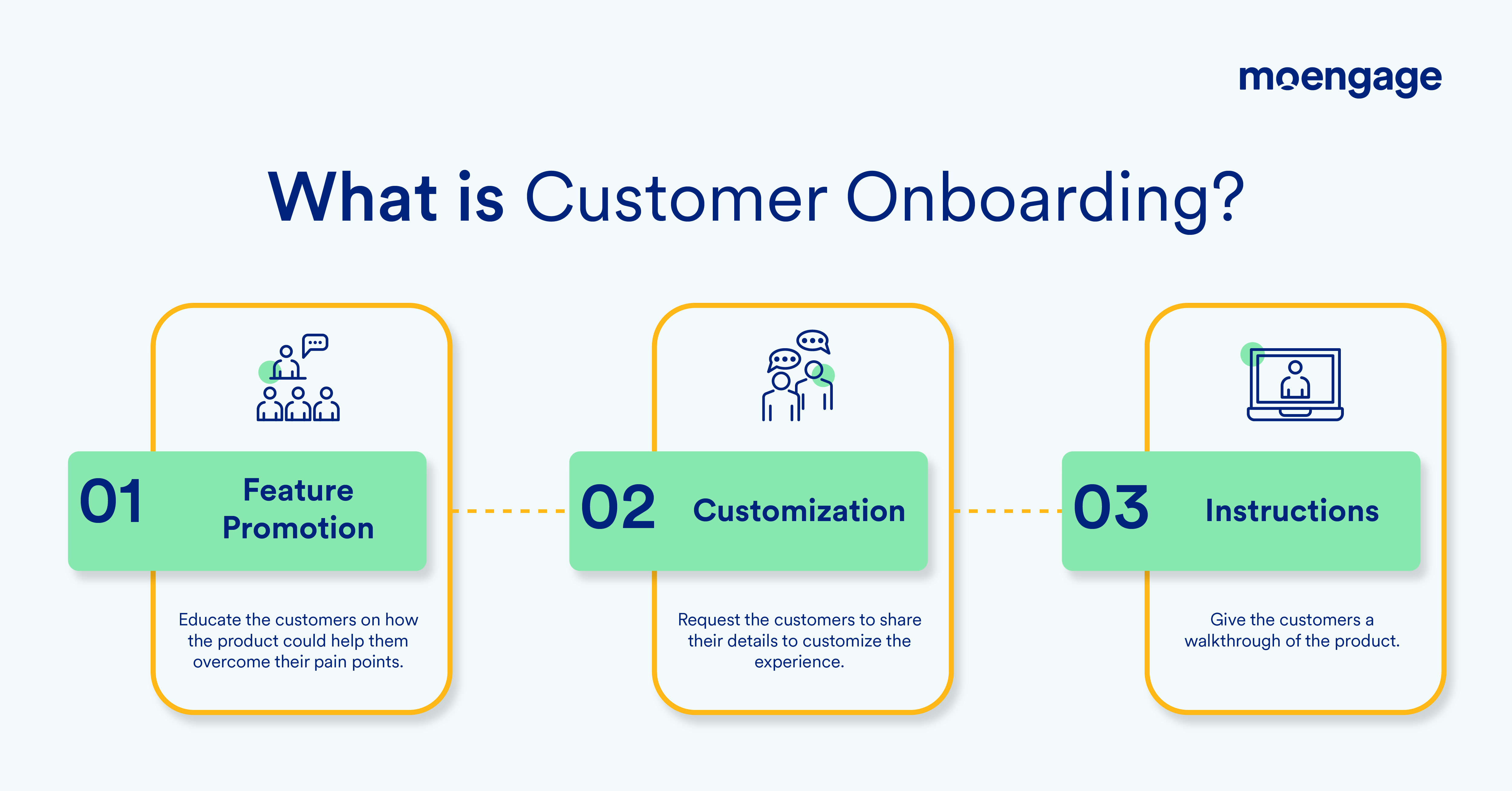
A good onboarding should check three primary boxes –
- Feature promotion and value discovery – Educate the customers on how they can benefit from using the platform, its various features, and its advantages.
- Customization –Request customers for their interests to create a personalized experience.
- Instructions – Give the customers a walkthrough of the product.
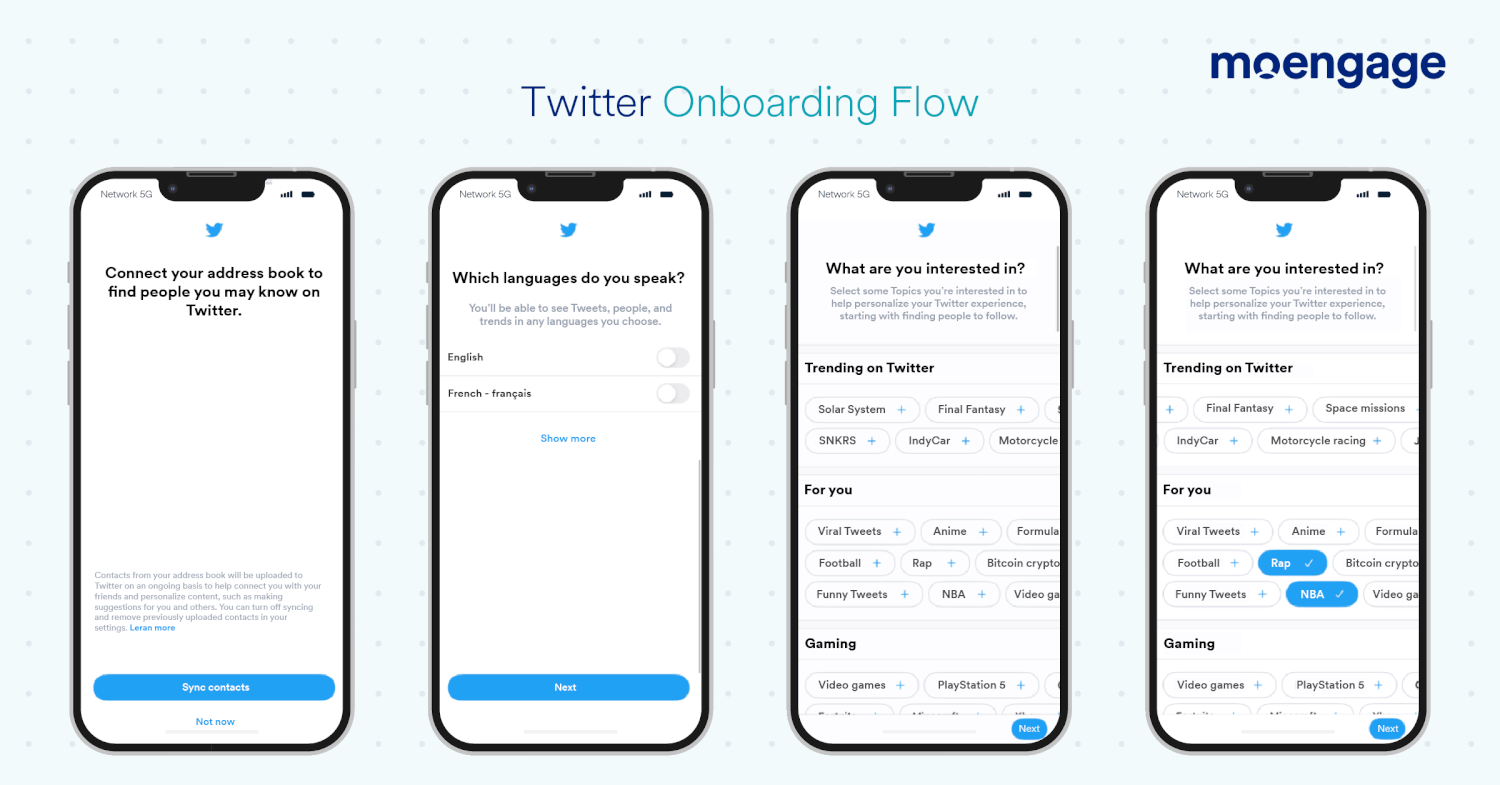
For example, if you analyze Twitter’s onboarding, you’ll find that they create a hyper-personalized experience for the customer by –
- Asking about topics and personalities customers might be interested in following.
- Asking the customer about the different languages they speak.
- Suggesting accounts to follow according to their interests and accounts they’ve followed.
- Sync their contact list to suggest them friends or families that are already on the platform.
MoEngage Advantage
Here’s how you can use MoEngage to improve customer onboarding –
Cohort Analysis
To boost customer retention, it’s critical to identify what makes existing customers stay. One effective way is Cohort Analysis.
Cohort analyses are the study of the common characteristics of these users over a specific period. These can include new users and existing users and their subsequent behaviors – like if they are conducting repeat purchases, or have been inactive for a long time.
Using MoEngage, you can do two types of cohort analysis:
- Acquisition cohorts
- Behavioral cohorts
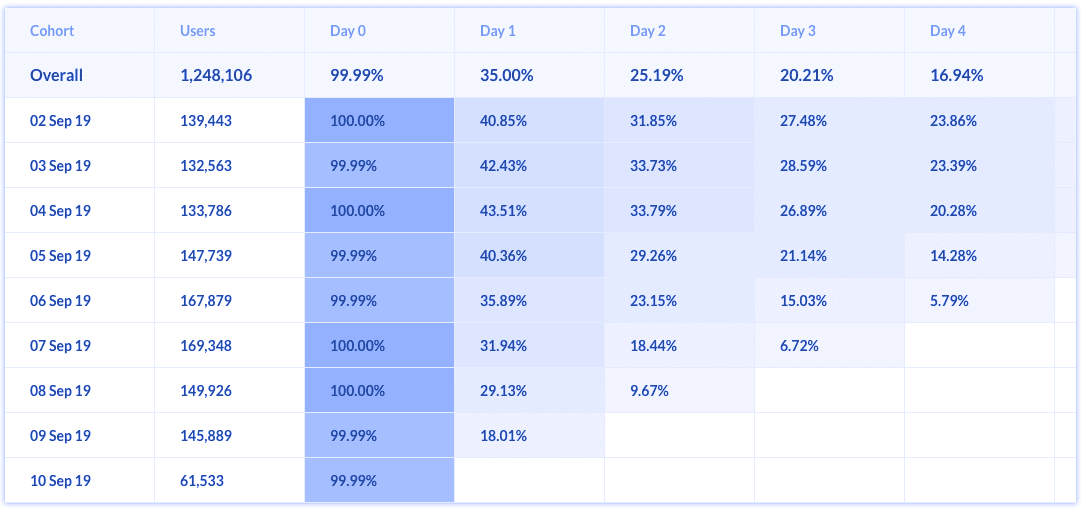
Funnel Analysis
A Funnel is a series of events that lead to a predefined goal event. For example, a user opens an e-commerce mobile app to purchase products. It’s is primarily used to calculate conversion on specific user behaviors.
Funnel Analysis offers a view of the user’s journey through a series of steps or stages, often towards a conversion goal.
Funnels help answer questions like –
- How many users searched for a account in the app?
- How many times users are playing a game before moving to the next level?
- At what stage are most users dropping off?
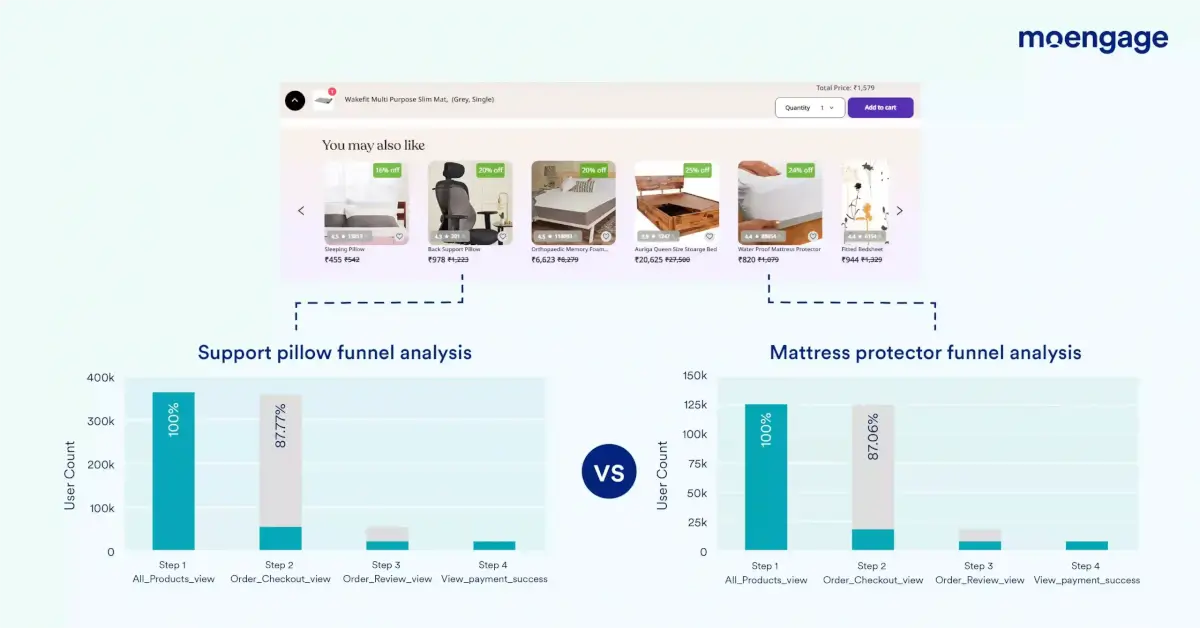
User Path Analysis
User paths help you identify the most popular paths users take and any bottlenecks or friction points in the user experience. These are multiple sequences of events, that start from or lead to, the desired event in your product during a specified time.
User path analysis answers the following questions:
- What are my users doing right after installing or opening the app?
- What do users do right before making a purchase or uninstalling the app?
- What paths do users follow between clicking on a notification and completing a purchase?
- How to analyze and optimize the user onboarding journeys?
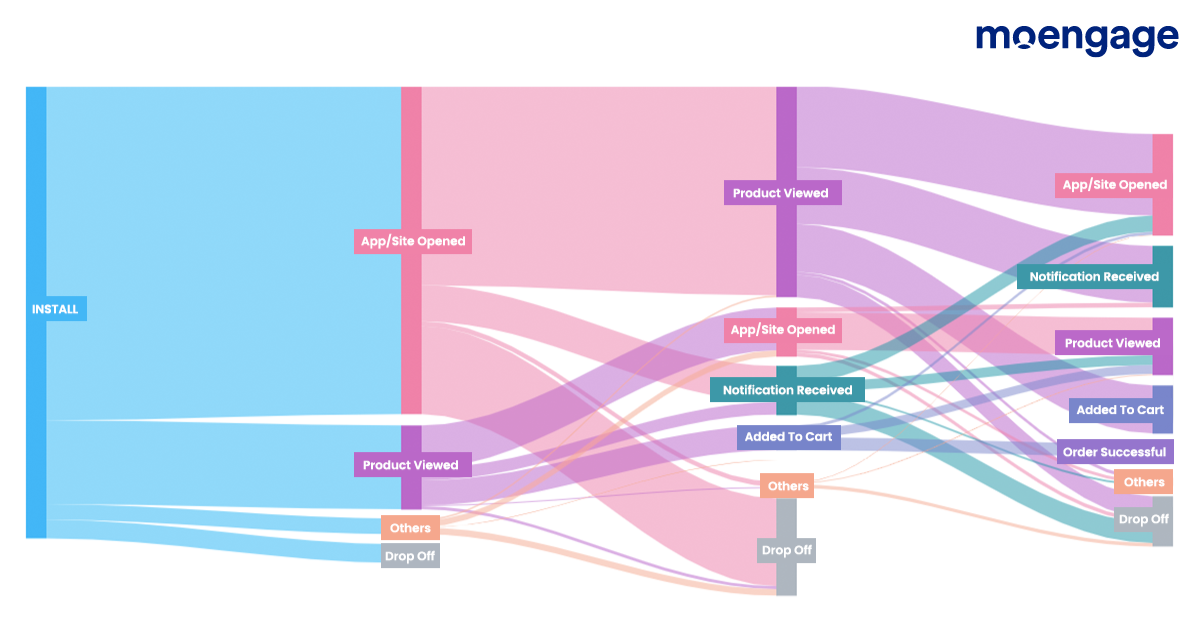
Key TakeawayCustomer onboarding helps customers understand the product or service and use it more actively. It also helps:
Further Reading – How to Onboard New Customers |
Retention Strategy #2 – User Activation
It’s extremely critical to activate consumers to ensure they’re hooked onto the platform and for long-term retention. Often times consumers are activated during onboarding, but sometimes, it’s after they’re onboarded. Onboarding and user activation mostly go hand in hand, and monitoring user activation is essential to understanding the effectiveness of your customer onboarding.
The definition of an activated user can be very different depending on the industry and from platform to platform. For example, gaming platforms can map customers as activated when they reach a certain level. Similarly, E-commerce platforms can map customers as activated when they make their first purchase.
Also the time to activation varies depending on the industry.
Strategies To Follow
So, how do you ensure customers derive value from your app or get the Aha moment faster?
The key is to educate consumers about your product’s advantages and features. You can use in-app messages to do this. You must’ve experienced, certain apps suggests you to do certain set of tasks when you sign-up.
For example, here’s checklist that Threads can suggest for user activation –
- Follow 10 people
- Post your first thread
- Repost a thread
- Like a thread
While often times customers end up completing such tasks on their own, it’s recommended to guide customers in activating themselves. To make it more fun and interactive, you can also show video tutorials.
Secondly, the onboarding needs to do a great job in explaining the value proposition of the application.
MoEngage Advantage
Here’s how you can use MoEngage to improve user activation –
Flows
Smart workflows can help you design stellar onboarding campaigns. You can build a workflow to send an automated welcome email to the customer to sign up and follow-up emails in a planned manner with videos, guides, and helpful tips.
Customer onboarding occurs smoothly when the campaigns are automated with workflows.
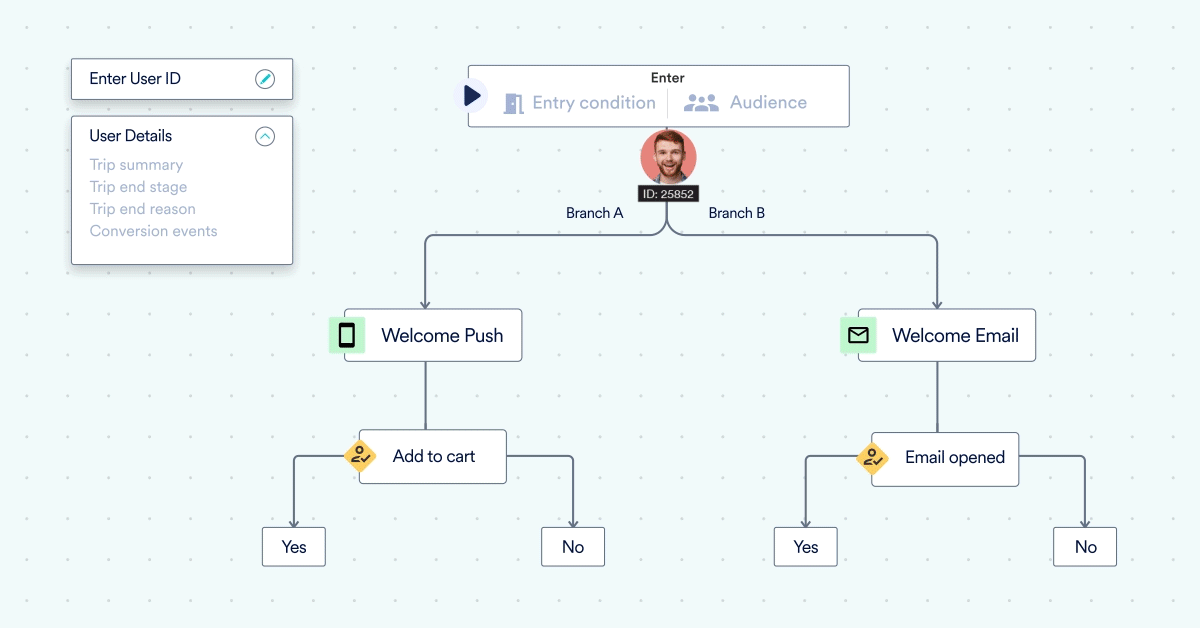
Key TakeawayBrands that focus on improving user activation rates often enjoy healthier growth and profitability. Further Reading – Learn how adopting an insights-led engagement approach enabled MANO to optimise onboarding and nudge the customer to make their first purchase. |
Retention Strategy #3 – Product Adoption
Only customers who completely understand your product and its features will visit your platform again. And to ensure that brands need to ensure effective adoption.
Unlike activation, adoption can take few days to weeks together. And there might be a chance that a few customers won’t go through the complete adoption process and that’s okay as they might be irrelevant customers which you’re better off not acquiring.
Strategies to Follow
Firstly, brands need to focus on feature onboarding. Start by bringing customer’s attention to the most used features of your app. Brands can use multiple channels including push notification and in-app messages to do this. You can also create in-app flows to educate customers.
Additionally, you can also create a 30 second video explaining a new feature or product using in-app messages.
Incorporating “Aha!” moments in the platform is also critical. This ensures that customers feel rewarded throughout their journey. A lot of consumer brands implement gamification elements to new features to create a engaging experience for consumers.
The Hooked Model
According to Nir Eyal, author of the book “Hooked”, the Hooked Model defines 4 steps to creating habits that will help in customer retention –
1. Trigger – An event that encourages some to act, which is either an –
External Trigger: like a push notification that alerts people to take an action.
Internal Trigger: the desire to do something (like play a game).
2. Action – A behaviour that anticipates a reward – checking your social media feed, shopping online and more.
3. Reward – The customer gets what they came far.
4. Investment – The customers invest something back into the product that makes it better the next time they use it.
MoEngage Advantage
Here’s how you can use MoEngage to improve product adoption –
Smart Recommendations
Using MoEngage’s Smart Recommendation brands can help build personalized experiences for their customers. While you can use it at all customer stages, this is incredibly useful for adoption.
For example, D2C brands can help to suggest the right products according to their interests, so it improves product discovery.
Similarly, OTT brands can leverage the AI recommendation model to suggest TV shows customers would be most interested in watching based on their preferences and past interactions.
Key TakeawayIf customers are unaware about the full potential of your platform, it’s difficult to keep them retained. Further Reading – Learn How HPCL Aims to Uplift Product Adoption With Insights-led Engagement |
Retention Strategy #4 – Referring New Customers
Loyal customers can be your biggest influencers. People tend to trust recommendations from friends and family more than billboards and paid advertisements.
This is the reason why every platform is investing in creating a rewarding referral loyalty program. It’s the single most effective way for them to boost customer acquisition and retention.
Multiple studies show that consumers acquired from referral are more retained, have a higher LTV and activate faster.
Strategies To Follow
Building an engaging loyalty is key to keep the referral loop running. Generic programs that offer zero personalization and boring loyalty programs most of the time end up failing. Here’s few ways to create a engaging loyalty program –
1. Gamification – Adding gamification mechanisms to loyalty programs can significantly increase customer engagement and help your program stand out.
2. Personalization – Another key element for a successful loyalty program is personalization. Offering customers personalized rewards, messaging and other features can improve customers’ satisfaction significantly.
3. Elements of emotional loyalty – You can split emotional loyalty into three separate elements — affinity, attachment, and trust.
Where affinity is the customer’s inherent feelings towards a brand or product, attachment represents how appreciated they feel by a brand. Then you have the element of trust — how much does the customer feel they can trust a brand’s underlying intentions?
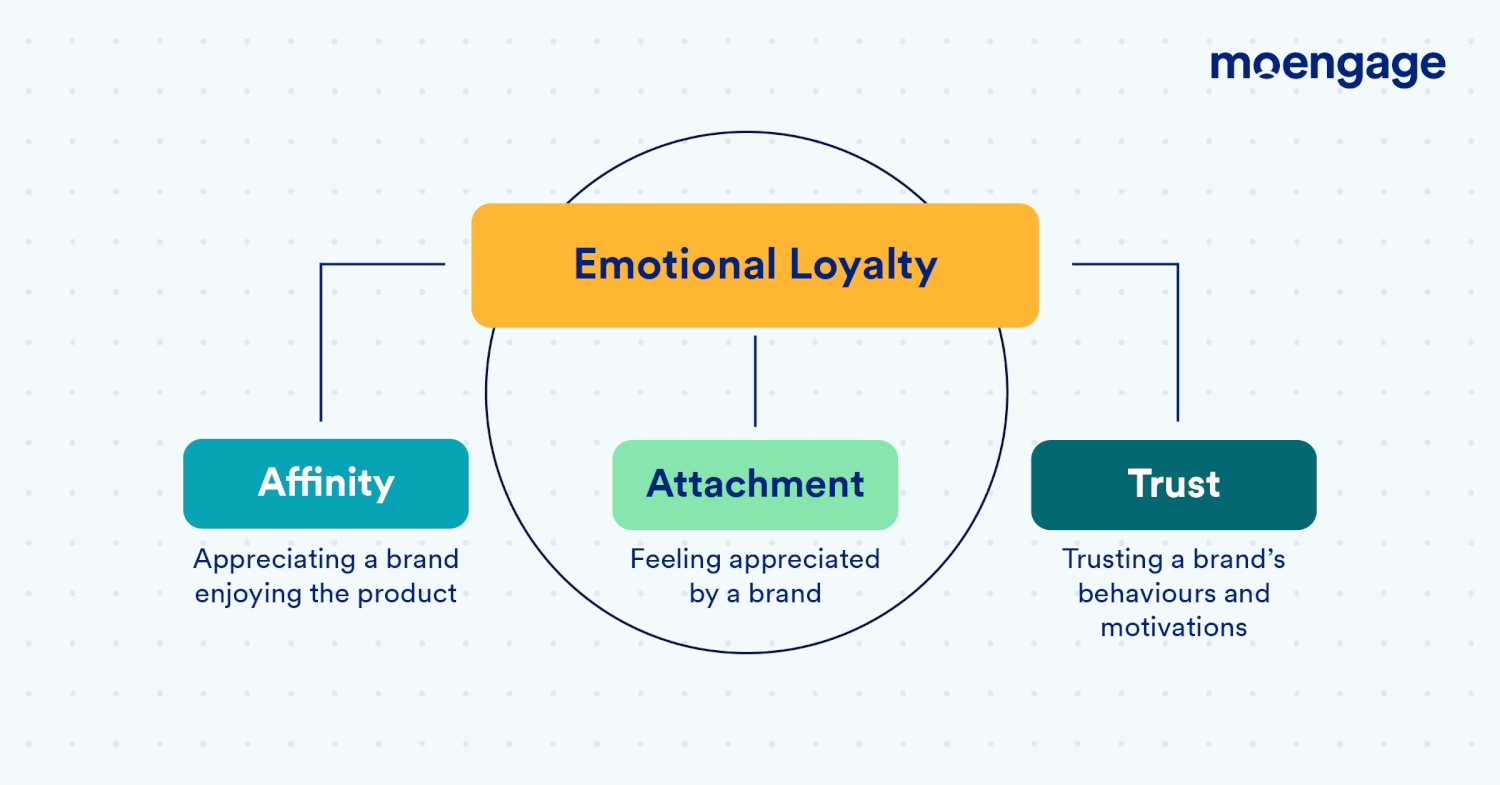
MoEngage Advantage
Here’s how you can use MoEngage to improve product loyalty –
RFM Segmentation
Using RFM Segmention on MoEngage, brands can create segments consumers into different buckets. So for example, if want to launch a loyalty program, the invitation can only go to customers who’re most active.
Learn how Bella Vita used RFM segmentation to clock an uplift of 57% in Retention rates.
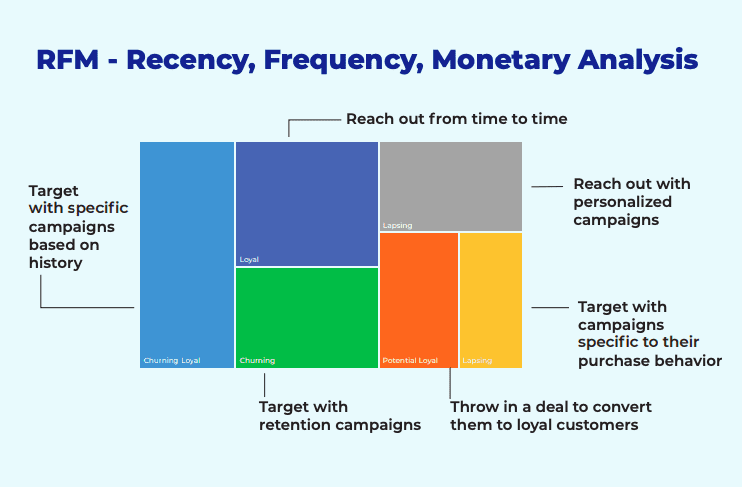
Predictions
Predictions leverages ML and AI capabilities that allow you to transform your past data into future insights through an easy and intuitive dashboard on MoEngage. With Predictions, you can accurately forecast customer actions. For example, you can identify customers willing to purchase or those who might uninstall your mobile app or become dormant. Armed with these insights, you can create highly relevant campaigns to nudge customers towards the desired action.
Key TakeawayLoyalty programs drive customer retention, which can help consumer brands generate revenue, increase referrals and achieve overall growth. Further Reading – How To Build Loyalty Programs That Your Customers Will Love |
Retention Strategy #5 – Re-engaging Dormant Customers
We’ll all know that it costs more to acquire a new customer than to retain one. Hence, it’s critical to re-engage dormant customers and win them back using various campaigns.
Strategies To Follow
The best way to go about re-engaging dormant customers is by running win-back campaigns.
A win-back campaign is a marketing strategy that helps you re-engage lost customers. You may also use them as an intervening strategy for customers on the cusp of being lost. The objective of a win-back campaign is to reignite customer interest, encourage interactions, and prevent customer churn.
Here’s few types of win-back campaign strategies –
- Gentle Reminders
- Motivators
- Bumper Incentives
- Feedback/Survey
To learn more, you can read our – Marketer’s Guide to Win-Back Campaigns in 2023.
MoEngage Advantage
Here’s how you can use MoEngage to re-engage dormant consumers –
Omnichannel Marketing
Marketers can run win-back campaigns across different channels – push notifications, email, text messages, etc. Since customers are interacting with your brand across multiple channels, it’s crucial to re-engage with them on their preferred channels.
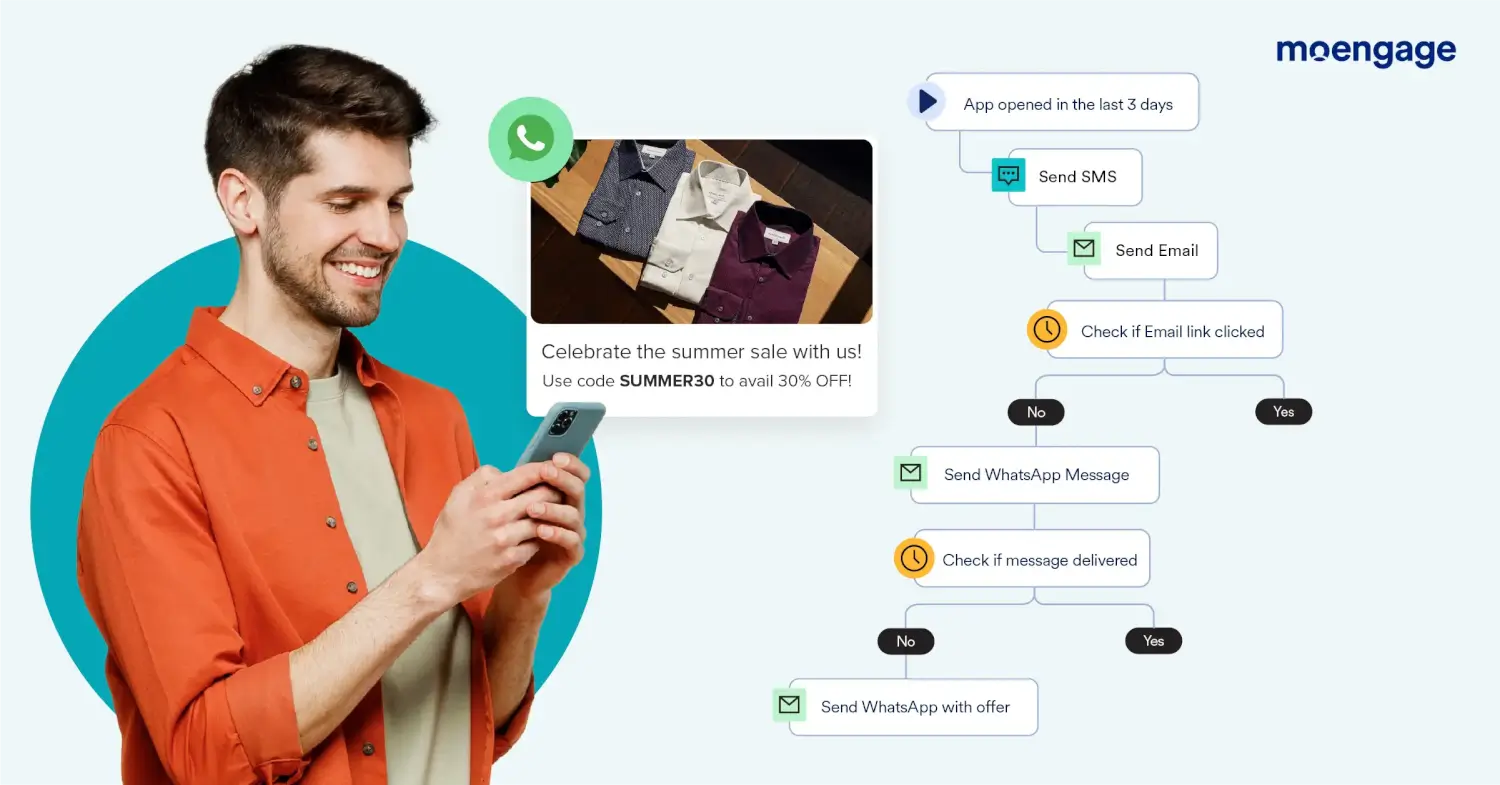
Key TakeawayIt’s critical to reactivate lost customers by proactively identifying churn behaviors and orchestrating campaigns to win them back. Further Reading – Learn How Airtel Wynk Music Reactivated 44% of Dormant Customers Using Insights-led Engagement |
Here Are Similar Growth Stories That You Might Love Reading
- From Viral Success to Losing Steam: The Role of Retention in Wordle’s Growth Story
- How Among Us Grew its User Base by 1600% in 8 Months [Growth Case Study]
- How Spotify Wrapped Marketing Campaign Boosted Mobile App Downloads And Engagement
- FIFA in Numbers: Successful Brand Campaigns That Caught the Eye













